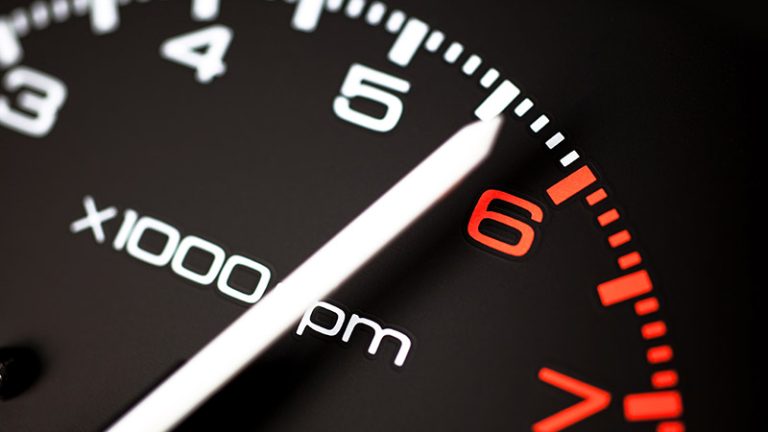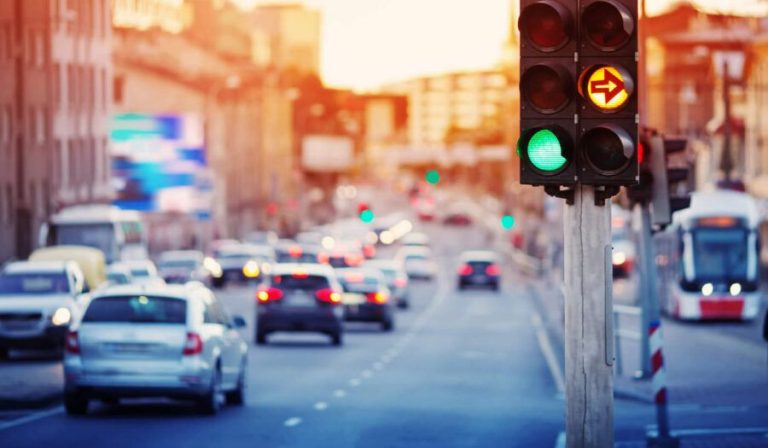What Are Hand Signals for Driving?
Ever found yourself behind the wheel, ready to make a turn, and suddenly your vehicle’s turn signals fail? Or perhaps you’re participating in a classic car rally, where modern signaling systems are a rarity? In these scenarios, and many others, knowing how to use driving hand signals can be a real lifesaver.
Florida law, for instance, mandates the use of a signal at least 100 feet before making a turn. And while most of us rely on our vehicle’s built-in turn signals, it’s crucial to know the hand signals too. From emergency brake failures to group motorcycle rides, hand signals ensure safety and clear communication on the road. In this post, we will see what hand signals are used for in driving and how to use them.

What are the Hand Signals for Driving?
Hand signals for driving are crucial for communication between drivers and other road users, including pedestrians and cyclists, especially when a vehicle’s turn signals or brake lights are not functioning. Here are the standard hand signals used for driving and their significance:
1. The Left Turn Hand Signal
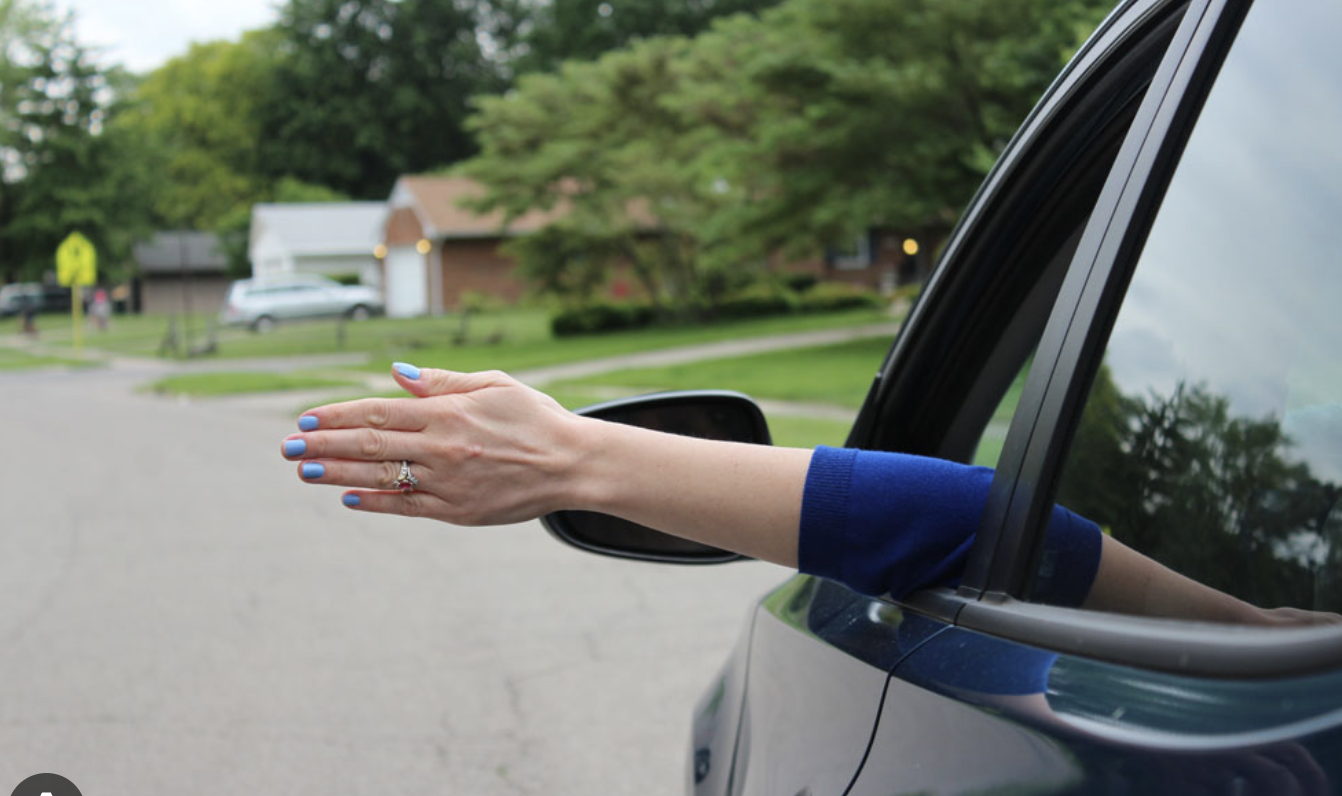
During a left turn, your vehicle’s insides won’t be visible to other drivers, particularly those behind. So, a hand signal becomes crucial in such scenarios. You signal a left turn by extending your arm straight out of the driver’s side window. This gesture needs to be clear and perceptible to others on the road.
2. The Right Turn Hand Signal
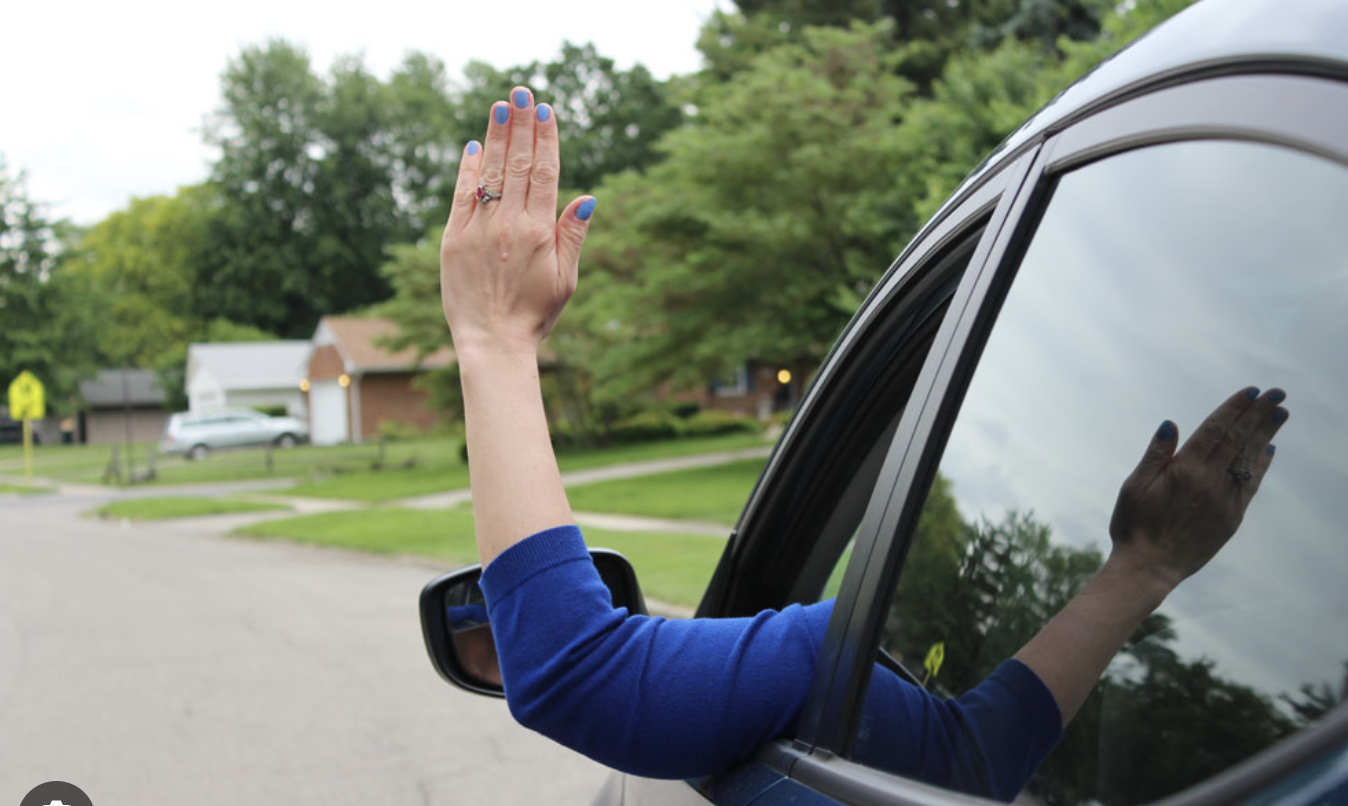
Awareness about generating a right turn signal is equally important. Extend your left arm out of the window, this time bending it upwards at a 90-degree angle, with the palm of your hand facing forward. Keep in mind, though, vehicles already on your right side might not see this signal due to your car’s body obstructing their view.
3. The Stop or Slow Down Hand Signal
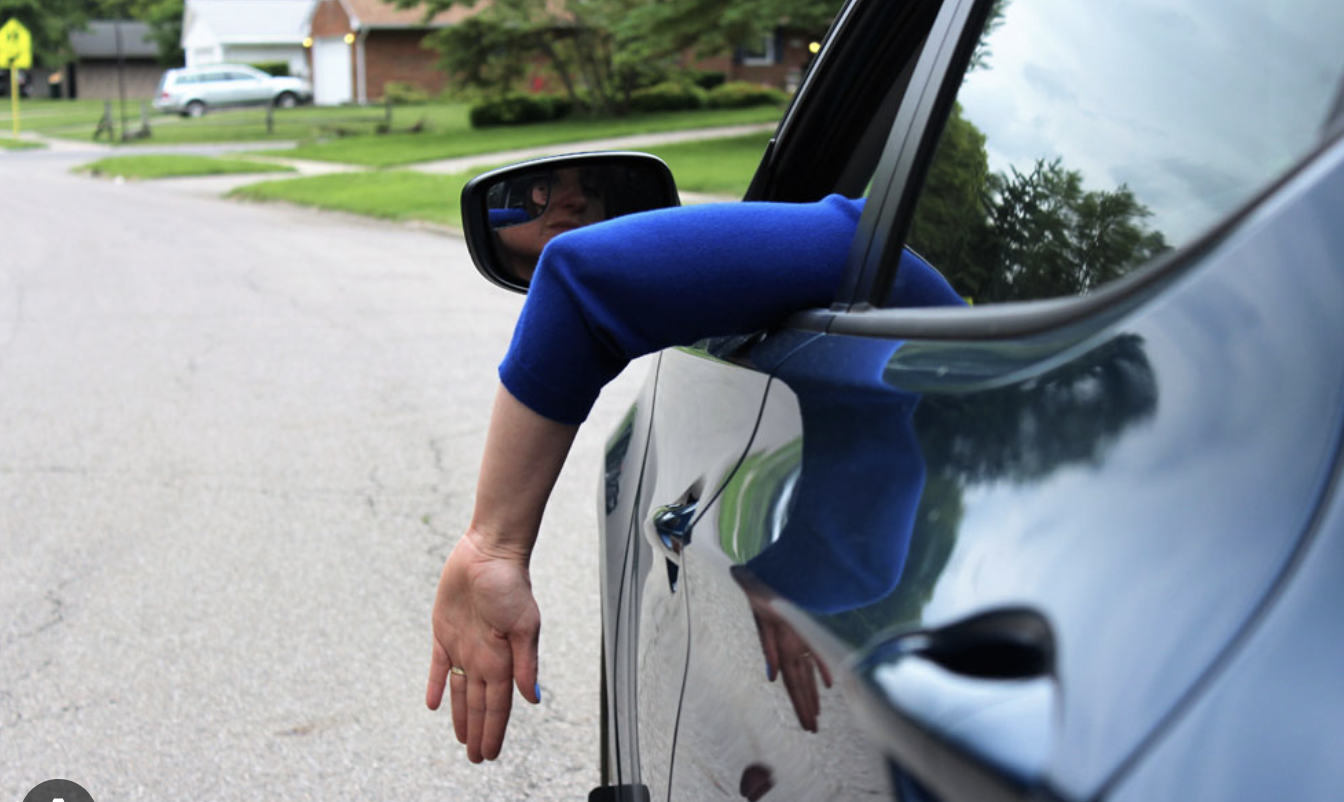
When planning to slow down or stop your vehicle, especially when your brake lights are dysfunctional, a proper hand signal can prevent mishaps. To indicate this, extend your left arm out of the window and bend it downwards, with your palm facing backward. Make your hand gesture prominent enough to be distinctly visible to others on the road.
These signals are particularly important in situations where your vehicle’s lights might be malfunctioning or when visibility is poor. They provide a clear, simple method to convey your intentions and enhance safety on the road by preventing misunderstandings and accidents.
When to Use Hand Signals?
Hand signals should be used in several specific situations to ensure safety and clear communication on the road:

-
When Vehicle Signals Fail: If your car’s turn signals or brake lights are malfunctioning or not working at all, use hand signals to indicate turns and stops to other drivers and pedestrians.
-
Riding Motorcycles or Bicycles: Motorcyclists and bicyclists often rely on hand signals because some models might not have electrical signals, or they may want to ensure their intentions are clear from a distance or in sunlight, which can sometimes wash out light signals.
-
During Driver’s Education and Testing: When learning to drive, instructors may teach hand signals as part of the curriculum. During the driving test, some examiners might ask candidates to demonstrate their knowledge and use of hand signals.
-
In Poor Visibility Conditions: In heavy rain, fog, or when facing direct sunlight, electronic signals might not be as visible. Hand signals can provide a clearer indication of your actions under these conditions.
-
In Group Driving Scenarios: When traveling in a convoy or during group rides (like with motorcycles or bicycles), drivers may use hand signals to communicate with each other, even if all vehicles are equipped with working lights, to ensure coordinated movement.
-
When Towing: If you are towing a trailer or another vehicle and the towed unit blocks the lights of the main vehicle, hand signals can be used to ensure visibility of your intentions.
How to Perform Hand Signals Properly?
Using the right hand signals at the right time helps you communicate better on the road. This makes driving safer and helps traffic flow better. Here are some important hand signals explained in an easy-to-understand way:
- Signal for Large Debris: Spotting debris in the driver’s lane represents a hazard. Alert incoming traffic by switching your headlights off and on. Similarly, for vehicles trailing, tap your brake lights or extend your left arm, motioning downwards to raise awareness.
- Lane Courtesy: An expression of good manners on the road comes through signaling before overtaking a slow-moving vehicle. Initiate this signal by flicking the left blinker light on and off four to six times. If the slower vehicle doesn’t respond, grab attention by turning your headlights on and off.
- Point Out Vehicle Issues: Indicate problems with another driver’s vehicle, like a slightly open trunk or a loose part, by pointing towards the issue and giving a thumbs-down signal. This helps inform unaware drivers of potential dangers.
- Light Problem: To signal a driver with a burnt-out headlight or an unintentionally left-on blinker, open and close your hand, making the thumb and fingertips meet. This gesture advises other motorists to check their lights.
- Request for Help: If you need assistance, make a time-out sign. In situations of distress, this hand signal helps in alerting other road users and getting help quickly.
Can You Replace Turn Signals With Hand Signals When Driving?
In most places, you can use hand signals as a temporary replacement for your turn signals, but it’s not recommended as a long-term solution. Here’s a breakdown:
- Legal Use: Hand signals are generally legal throughout the United States and most countries. They are typically covered in driver’s manuals and traffic laws.
- Primary Function: Hand signals are meant to be used when your turn signals aren’t working properly.
Why not rely solely on hand signals?
- Less Visible: Turn signals are brighter and more noticeable, especially in low-light conditions or from a distance.
- Not as Common: Many drivers, especially younger ones, might not be familiar with hand signals or their interpretations. This can lead to confusion and potentially dangerous situations.
- Inconvenient and Less Safe: Using hand signals requires taking a hand off the wheel, momentarily reducing control of the vehicle.
Best Practices:
- Use turn signals whenever possible.
- If your turn signals malfunction, fix them as soon as possible.
- While driving with a broken turn signal, use proper hand signals clearly and well in advance of turning or stopping.
- Consider turning on your hazard lights to indicate a potential problem with your vehicle further.
Frequently Asked Questions
1: How can I use hand signals while I drive?
Hand signals are performed by extending your arm out the driver’s window and making specific gestures based on what you want to communicate. For instance, signalling a right turn requires your elbow be bent as you point your hand to the sky.
2: How can I apologize using hand signals in driving?
To apologize, raise your hand up with your palm facing the offended driver. This is seen as an admitted mistake. A “V” sign with your fingers is also commonly understood as a peace offering.
3: How do I signal a left turn with hand signals?
To signal a left turn, extend your right arm out of the window, palm facing forward, then rotate your arm in forward circles, mimicking a steering wheel turning left.
4: Which way do I move the turn signal lever to indicate a right turn?
Move the turn signal lever, typically located on the left of your steering wheel, upwards to indicate a right turn.
5: Is it legal to use hand signals while driving?
Yes, using hand signals while driving is legal. They are particularly useful when your car’s signal lights are out of function or when bright sunlight makes them hard to see. Always signal when making turns, changing lanes, or decelerating.

Hi! I’m Larry Gibbs, studying mechanical engineering with a focus on cars. I really love Ferraris and write blog posts about the latest car stuff. When not studying or blogging, I’m usually on a road trip exploring new places. I also enjoy playing football and watching movies. Life’s an adventure, and I’m all about enjoying the ride!



